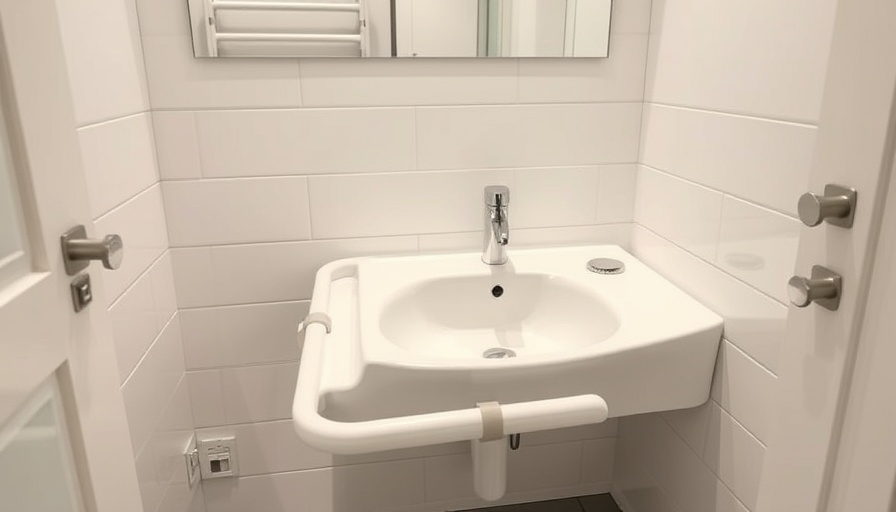
Why Sink Height Matters for Accessibility
As a key feature in any bathroom, sink height is crucial for ensuring accessibility, especially for individuals who use wheelchairs. Understanding the regulations surrounding sink height can significantly affect not only the functionality of a space but also its compliance with accessibility standards. The Americans with Disabilities Act (ADA) specifies certain guidelines for sink heights that ensure individuals with disabilities can use them with ease. These best practices ensure that family and friends with mobility challenges feel comfortable and included in the home.
Understanding Regulations and Compliance
Description of regulatory compliance can often seem like a daunting task. However, it plays a fundamental role in making our environments more inclusive. The ADA recommends that the height of sinks be no higher than 34 inches from the ground, with an under-sink clearance of at least 27 inches to accommodate wheelchair users. These specifications are designed not just to establish safety protocols but also to promote the independence of those who may struggle with traditional setups. By meeting these requirements, homeowners not only comply with legal standards but also foster inclusivity at home.
Common Misconceptions About Sink Height Standards
One misconception that often comes up is that accessibility regulations are just optional suggestions. On the contrary, these guidelines are not merely advisory; in many cases, they are mandatory, particularly under ADA regulations for public accessibility. Many homeowners assume that they can simply install “regular” sinks in their bathrooms, thinking they will 'make do' with any height, but this can lead to issues down the line, especially during home inspections or when offering a house to potential buyers.
Incorporating Unique Features for Greater Accessibility
Adapting sink height can sometimes be enhanced by installing features such as pull-out faucets or motion sensors, which further promote independence for users. Innovative designs tailored for accessibility not only comply with regulations but can also enhance the overall aesthetic of the bathroom. Consider mixing functionality with style by exploring numerous options available in the market that prioritize both accessibility and design.
Practical Insights: Making Modifications
For homeowners considering modifications, collaborating with experienced designers can make all the difference. By consulting with experts in accessibility renovations, a tailored plan can be developed to not only meet existing codes but also enhance overall usability. Such professionals can provide valuable insights, ensuring that your updates reflect the highest standards of compliance while meeting your family’s specific needs.
Looking Ahead: Future Trends in Accessible Design
The spin towards making homes more accessible is not just gaining traction; it is becoming a fundamental aspect of modern design. As communities become increasingly aware of inclusivity, trends will shift toward more adaptive approaches in home renovations. Materials like soft-close features and textured surfaces are likely to emerge as standard considerations, showcasing an eagerness to combine safety with aesthetics in accessible design.
Emotional Touch: The Human Experience of Accessibility
When families prioritize accessible design, they aren't merely adjusting sinks; they're crafting spaces that promote dignity and independence. There’s an emotional layer in creating an environment where aging parents, children, or friends can utilize all areas of a home with confidence. Building spaces that inspire comfort and usability fosters connections among family members, embodying what it means to be a compassionate caregiver.
Call to Action: Advocate for Change
Anyone can play a role in advocating for better accessibility in their communities. Whether it’s through discussing ideas with local builders or supporting legislation that favors inclusivity, your voice matters. Homeowners, especially those who are decision-makers in renovations, are encouraged to educate themselves continually on regulatory changes and innovations in accessible design.
 Add Row
Add Row  Add
Add 




Write A Comment